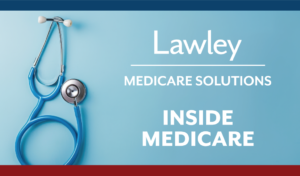Transitional Reinsurance Program
The Affordable Care Act (ACA) imposes a fee on health insurance issuers and self-funded group health plans in order to fund a transitional reinsurance program for the first three years of Exchange operation (2014-2016). The fees will be used to help stabilize premiums for coverage in the individual market. Click here to download the entire document as a PDF: Transitional Reinsurance Fee
Entities that must pay these fees, called “contributing entities,” are generally required to submit their annual enrollment count to the Department of Health and Human Services (HHS) by Nov. 15 of each benefit year.
Annual enrollment counts are submitted via www.pay.gov using the Annual Enrollment and Contributions Submission Form. There is a specific form for each benefit year. The 2016 contribution form became available on October 3, 2016.
For the 2016 benefit year, the deadline for submitting the reinsurance fee contribution form is Nov. 15, 2016. The payment deadlines for entities making two payments are Jan. 17, 2017, and Nov. 15, 2017. For entities making one payment, the full contribution amount is due Jan. 17, 2017.
Contributing Entities
A contributing entity is defined as a health insurance issuer or a self-insured group health plan sponsor.
- Fully-insured Group Health Plans—For insured health plans, the issuer of the health insurance policy is required to pay reinsurance fees. However, issuers will likely shift the cost of the fees onto sponsors through premium increases.
- Self-insured Group Health Plans—For self-insured group health plans, the plan sponsor is liable for paying reinsurance fees, although a TPA or an administrative-services-only (ASO) contractor may pay the fee at the plan’s direction. For a plan maintained by a single employer, the employer is the plan sponsor.
However, there is a limited exception for self-insured, self-administered plans. For 2015 and 2016, the term “contributing entity” excludes self-insured group health plans that do not use a TPA for the core administrative functions of claims processing or adjudication (including management of appeals) or plan enrollment.
Deadlines
Contributing entities are required to submit their annual enrollment count to HHS, generally by Nov. 15 of each benefit year. Contributing entities must submit the 2016 annual enrollment count by Nov. 15, 2016.
These fees may be paid in two installments—one at the beginning of the calendar year following the applicable benefit year, and then one at the end of that calendar year. However, contributing entities may choose to make the full payment at one time.
Key deadlines for the 2016 benefit year are:
- Oct. 3, 2016—The 2016 ACA Transitional Reinsurance Program Annual Enrollment and Contributions Submission Form became available on www.pay.gov.
- Nov. 15, 2016—Entities must submit their annual enrollment counts using the Annual Enrollment and Contributions Submission Form by Nov. 15, 2016. Entities must also schedule payment at this time (entities making two payments should submit the contribution form and schedule payment of the first collection, then duplicate the form and schedule payment of the second collection).
- Jan. 17, 2017—For entities making two payments, the first contribution amount of $21.60 per covered life is payable by Jan. 17, 2017. For entities making one payment, the full contribution amount of $27 per covered life is payable by Jan. 17, 2017.
- Nov. 15, 2017—For entities making two payments, the second contribution amount of $5.40 per covered life is payable by Nov. 15, 2017.
Reinsurance Contribution Amounts
The reinsurance program’s fees are based on a national contribution rate, which HHS announces annually.
- For 2014, the annual contribution rate was $63 per enrollee per year, or $5.25 per month.
- For 2015, the annual contribution rate is $44 per enrollee per year, or about $3.67 per month.
- For 2016, the annual contribution rate is $27 per enrollee per year, or $2.25 per month.
Several methods are available to determine the number of covered lives under a health plan:
- The Actual Count Method – This method involves adding the total number of lives (enrollees) covered for each day of the first nine months of the benefit year and dividing that total by the number of days in those nine months
- The Snapshot Count Method – This method involves adding the total number of lives (enrollees) covered on any date during the same corresponding month in each of the first three quarters of the benefit year (or more dates, if an equal number of dates are used for each quarter) and dividing the total by the number of dates on which a count was made.
- The Snapshot Factor Method – This method involves adding the total number of lives (enrollees) covered on any date during the same corresponding month in each of the first three quarters of the benefit year (or more dates, if an equal number of dates are used for each quarter) and dividing that total by the number of dates on which a count was made. Under this method, the number of lives covered on a date is calculated by adding:
- The number of participants with self-only coverage on the date; and
- The product of the number of participants with coverage other than self-only coverage on the date and a factor of 2.35
The 2.35 dependency factor was developed by the IRS to reflect that all participants with coverage other than self-only have coverage for themselves and some number of dependents.
- The Form 5500 Method – This method requires a contributing entity to use the number of lives (enrollees) covered for the most current plan year, calculated based upon the “Annual Return/Report of Employee Benefit Plan” filed with the Department of Labor (Form 5500) for the last applicable time period. For purposes of this counting method:
- The number of lives covered for the plan year for a plan offering only self-only coverage equals the sum of the total participants covered at the beginning and end of the plan year (as reported on lines 5 and 6(a)-(c) of Form 5500) divided by 2.
- The number of lives covered for the plan year for a plan offering self-only coverage and other than self-only coverage equals the sum of the total participants covered at the beginning and the end of the plan year, as reported on lines 5 and 6(a)-(c) of the Form 5500.
The permitted counting method depends on whether the contributing entity is a health insurance issuer or a self-insured group health plan, and whether, in the case of a group health plan that is a contributing entity, the plan offers more than one coverage option.
The Collection Process
A contributing entity can complete all of the required steps (that is, registration, submission of annual enrollment count and remittance of contributions) on www.pay.gov. Using a contribution form, entities will provide basic company and contact information and the annual enrollment count for the applicable benefit year. The contribution form for 2016 became available via www.pay.gov on Oct. 3, 2016.
The form will auto-calculate the contribution amounts. To complete the submission, entities will also submit payment information and schedule a payment date for the contributions. Supporting documentation must also be submitted through www.pay.gov with the contribution form.
More Information
HHS offers training for the www.pay.gov collection process. To receive notices from HHS regarding upcoming training and to review training resources, register at www.regtap.info.
HHS also provided an Annual Enrollment and Contributions Submission Form Manual, which provides step-by-step instructions for completing and submitting the contribution form and supporting documentation, details on key elements and business concepts, and resources to further assist the contributing entity. A Supporting Documentation Job Aid Manual is also available to help contributing entities create the supporting documentation.






